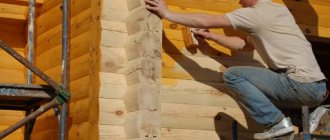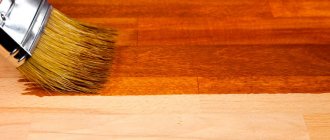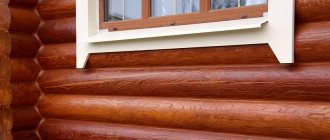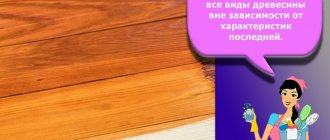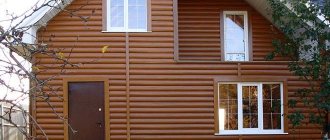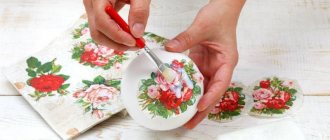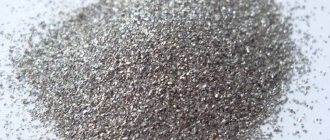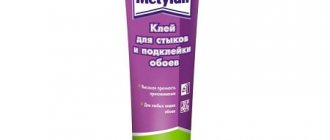Updated: 03/12/2021 15:14:28
Expert: Andrey Nikolaevich Kuznetsov
*Review of the best according to the editors of expertology.ru. About the selection criteria. This material is subjective in nature, does not constitute advertising and does not serve as a purchase guide. Before purchasing, consultation with a specialist is required.
Wood is a popular building material that is widely used in Russia. To increase the lifespan of wood, it must be carefully cared for. Special impregnations help protect wooden structures from negative atmospheric influences, rotting, the appearance of fungus, mold and insects. In addition, some compositions reduce the flammability of the material, making it fireproof. The domestic market offers products from different manufacturers, each of them praises its own antiseptic. Advice from our experts will help you avoid making mistakes when choosing a composition.
What types of wood impregnations are there?
Let us note that there are a variety of impregnations for wood, and a variety of substances that are used in one way or another or are theoretically suitable for use can also be classified in this group. Humanity has known wood as a building material since the beginning of time, so a huge amount of experience has been accumulated.
Attention! We do not review all antiseptics and do not pretend to have an exhaustive catalog of them; we review the most relevant drugs available on the market today.
Main groups
As was said, there are a lot of impregnations, so we will divide them into groups to make it easier to navigate through all this diversity. As a unifying criterion, we will choose one or another distinctive feature of goods belonging to the same group, be it composition, scope of application, basic properties or something else.
Impregnations for wood:
- decorative, protective and mixed;
- natural, synthetic and mixed;
- moisture-resistant and water-repellent;
- water-based and organic solvent-based;
- oil and wax;
- imparting fire retardant properties;
- antiseptics against rot and mold;
- fire-retardant compounds;
- tinting and colorless;
- for external and internal work;
- salt-based and organic compounds.
If you need to protect a wooden product from moisture, you need to answer a number of questions:
- Where will the product be used, indoors or outdoors?
- How will the part be used, for what purposes?
- Who and what will come into contact with the product, will children or food be included in this list?
- What humidity regime is expected? Will there be direct contact with water?
- What should the part look like in its final form?
After answering these questions, you will have an idea of the requirements that the drug must meet. Next, it remains to choose the right one.
Purpose and types of impregnations
The main purpose of any wood antiseptic is to protect the wood from rotting under the influence of moisture, and after treatment it becomes completely unattractive to insects.
As a result, the service life increases significantly compared to untreated wood, and adding color to the liquid also allows you to give the wood the desired shade; the color range of wood impregnation includes a variety of shades, so there will be no problems with the choice.
As for classification, we can distinguish the following types of compositions:
- compositions that protect wood from moisture and insects; after treatment, water is not absorbed, but simply rolls off the surface. Such liquids are called antiseptics;
- antipyretics are used to protect against fire;
Antipyretics slow fire
Note! You need to understand that antipyretics do not guarantee 100% protection from fire. They will prevent the wood from igniting when exposed to high temperatures, thereby slowing down the spread of fire. But over time, the wood will still catch fire.
- Colored compositions stand apart. The main difference from the usual ones is that the manufacturer has already added the dye in the optimal proportion; the price of such compositions may be slightly higher than the usual ones;
Quite a popular color impregnation
- There are also combined formulations; they combine the properties of an antiseptic and an antipyretic at the same time.
The classification can also be based on the solvent used; the following types of compositions can be distinguished:
- oil-based - wood acquires hydrophobic properties. But such compositions are short-lived and need to be updated quite often. But after processing, the wood looks fresh, its texture appears;
- based on various chemical solvents (white spirit, etc.), can be either colorless or colored, and the colors of wood impregnation vary over a wide range. Such compositions are used for application to dry wood and guarantee rapid and deep penetration into the wood. The only disadvantage can be considered the strong unpleasant odor and toxicity of the composition;
Note! In addition to protection from moisture, UV radiation and other unfavorable factors, they can also be used to combat local manifestations of mold or mildew.
- water based. Such liquids are ideal for treating under-dried wood; products based on chemical solvents simply will not penetrate due to the presence of moisture in the wood. But if applied liberally to dry wood, there is a risk that the product will move a little.
Water-based composition
Antiseptic impregnations
Antiseptic impregnations constitute, perhaps, the widest and most popular group of products in this class. This is due to the fact that it is antiseptic treatment that allows you to get rid of the most harmful pests - bacteria and molds, wood-eating insects and other biological agents that cause corrosion of the material.
Experts know that moisture, as such, is not particularly harmful to wood.
The problem is that it creates an environment for the development of various microorganisms, such as mold and bacteria. But they are already beginning to cause serious harm: causing rot, turning them blue or gray, consuming cellulose as food, turning the product into dust. Antiseptics are:
- transport, such as GOODHIM T 151;
- for baths and saunas, for example, GOODHIM S200;
- gels with high penetrating effect GOODHIM 230 IMPREGNANT;
- For interior and exterior use;
- difficult to wash out and unwashable;
- tinting and colorless;
- from insects like GOODHIM 100 “Stopzhuk”;
- for end protection like GOODHIM TOR GBS.
The effect of antiseptic impregnations is based on the content of biocidal and fungicidal components in the composition. Transport or temporary antiseptics are designed to protect lumber during storage, delivery and construction. They are inexpensive and are quickly washed away by rain, so they serve only as a temporary measure.
Solutions may contain color pigments that will help paint the product in the desired color and highlight its natural pattern. For light tinting, GOODHIM N300 is good. If this is not necessary, you can choose a composition without color pigments. A prominent representative of such a product is GOODHIM N 320, a colorless, hard-to-wash antiseptic.
Preparations for internal work must meet a lot of safety requirements, especially when in contact with skin or used in children's rooms. Usually they try to use natural ingredients or their analogues.
Important! The main task of the worker is to ensure the necessary consumption of the product during application in order to achieve a certain concentration and penetration to the required depth.
How to make impregnation with your own hands
For external use, you should try preparing a protective solution yourself. The quality will be no worse, but the price will be much cheaper.
During work, you must not neglect safety rules and wear protective clothing.
Homemade bitumen impregnation
To create you will need:
- bitumen;
- petrol;
- diesel fuel;
- metal container for cooking;
- switched on gas burner or other source of fire;
- stirring tool.
Melt pieces of solid bitumen in a large container over low heat. In this case, you need to stir constantly so that there are no lumps left and the mixture is homogeneous. Remove from heat and allow to cool slightly. Then gasoline is added. It is important to remember that this solvent evaporates quickly.
The impregnation is mixed to the desired thickness. It is recommended to apply almost immediately after preparation, otherwise it will begin to harden.
Bitumen is a reliable solution for protecting fence posts, foundations, and building bases.
Not applicable for interior work.
Fire protection
This group of impregnations appeared not as long ago as many others. Here, as the name suggests, two types of wood protection are combined - from fire and from biological corrosion. In other words, this product is an antiseptic with the addition of substances that prevent combustion.
To better understand the features of such products, consider the preparations GOODHIM PROF 1-G and GOODHIM PROF 1-G RED. Both products are a mixture of biocides and fire retardants; these are professional preparations that provide the highest fire safety group and high-intensity antiseptic protection. Suitable for use indoors and outdoors in areas of increased fire danger.
Attention! As a rule, the solution slightly tints the wood into a yellowish or reddish tint, but this is not an impregnation paint; this is necessary to control the quality of the processing. During further finishing, this tint can be easily painted over.
Fire-retardant treatment is the key to your safety. This applies to owners of log houses, wooden houses made of laminated or regular timber, owners on whose property there are barns, chicken coops and pigsties made of wood. This treatment is no less important for the boards of roofing rafter systems. View products from the fire and bioprotection group.
Decorative and decorative-protective
This group includes various stains, impregnating paints, impregnating varnishes, oil-waxes, drying oils, etc. For example, linen impregnation with the addition of wax, driers and natural resins is at the same time a moisture-proof, decorative and glaze treatment that gives antiparasitic and decorative effects.
Most stains are alcohol-based and organic solvent-based. Such preparations penetrate well into the structure of the material, but increase its flammability and combustibility. At the same time, there is a tinting, hard-to-wash antiseptic GOODHIM N 350, which is water-based and therefore odorless, which is characteristic of any alkyd impregnation. Impregnants are used for deep impregnation of parts that will be exposed to operation in damp rooms, as well as in the open air. They can be used to treat furniture.
Means for protection against biological damage
The main enemy of wood is moisture. Penetrating into the structure of the tree, it creates an ideal environment for biological destroyers.
KrutoiperezFORUMHOUSE Member
I encountered a mushroom kingdom in my newly built house. Fungi (mold) began to grow on the floor, where there were black veins on the floorboard. The forest is so shaggy that you can even cut it and eat potatoes.
Mold, fungi and harmful insects destroy the structure of wood in different ways.
| Biodestroyer | Damage |
| Insects (wood beetles) | The main damage to wooden structures is caused by larvae; they feed on wood, “gnaw” passages in it and destroy it. |
| Putrefactive fungus (wood-destroying) | Breaks down the organic substances of wood and over time turns it into dust and humus Until the log loses 75% of its strength, the presence of fungus is almost impossible to recognize by external signs |
| Mold and blue (wood staining fungi) | They develop on wood of natural moisture, do not destroy the structure of the tree, but give a shade: blue, yellow, gray, white, greenish and black. They often mask rot and can signal the presence of wood-decaying fungi. |
But antiseptic protection helps against any type of biodegraders.
An antiseptic is an impregnation that gives wood additional properties. The deeper it penetrates into the wood, the better it protects it from mold, mildew and insects.
Technical Specialist
Without the use of an antiseptic, a wooden structure will inevitably collapse under severe operating conditions. Moisture will penetrate into the material, and soon you will notice signs of a wood-destroying fungus, and then insects that like to settle in loose cellulose fibers.
There are two types of antiseptics on the modern market: one destroys fungal cells, and the other blocks their enzymes and, roughly speaking, makes them die of hunger.
St1512FORUMHOUSE Member
The function of an antiseptic is to saturate the outer layer of the tree with salts, preventing moisture and any biology from negatively affecting the tree.
Oil and organically soluble antiseptics are classified as non-washable; Water-based antiseptics may be difficult or easy to wash off. But water-soluble antiseptics from trusted manufacturers can last up to 25 years.
Technical Specialist
Antiseptics produced by our company are designed to protect against biological damage outdoors and indoors; they work in humid climates, in prolonged contact with soil and organic waste and can withstand prolonged exposure to moisture. And even under highly complex operating conditions, they protect wood for 15 to 25 years.
The most popular antiseptics are designed to protect wood in conditions of high humidity, including when it comes into contact with wet soil.
This antiseptic is applied to a prepared, dry surface (humidity no higher than 25%), which is free of bark, bast and traces of old coatings that would prevent the antiseptic from penetrating into the wood.
Technical Specialist
Antiseptics should not be applied to surfaces that show signs of biological destruction. In this case, we recommend applying bleach first, then waiting until the wood is completely dry, and then applying an antiseptic. A surface treated in this way will last for many years.
Minimum or maximum impregnation?
Different woods require different impregnation treatments. It all depends on the type of wood and how much time has passed since it was processed. There are many exotic tree species with very dense wood that naturally contains tannins and antiseptic substances that protect them from infection by mold and microbes. Neither microorganisms nor insects like freshly cut wood from sequoia, Brazilian cherry, Brazilian teak - cumaru and some other exotic trees. Natural protection remains reliable for 10-12 years. During this time, treatment with impregnations is required either minimally or not at all. In Russia, such species as cedar, oak, larch, yew, and acacia have similar properties.
However, dense wood, protected from harmful biological factors, has a significant drawback - it is too expensive. Therefore, most houses, furniture and other wooden products are made from pine, spruce and other fairly loose species. And here you need to figure out how reliable and durable the protection of the product should be. Depending on the density of the wood, as well as on the climatic conditions in which it will serve, and what kind of finishing coating is expected, a reliable antiseptic impregnation is chosen.
The most serious treatment is called impregnation and is carried out in industrial conditions under full immersion, high pressure and other harsh methods of exposure. In private construction, finishing or carpentry work, complete immersion of small parts in household metal containers and heating are used. For large beams, in the absence of special baths, make a ditch of the required size, lay it out with a durable film, pour in an impregnating composition and keep the material there for the prescribed number of hours.
The process of antiseptic and protective treatment is greatly simplified if you use modern innovative impregnating primers with deep penetration biocides. Such, for example, as GOODHIM IMPREGNANT 230. The composition is applied using conventional methods very easily, thanks to the gel consistency, it penetrates deeply, protects reliably and for a long time, does not cloud the beautiful appearance of the wood and, at the same time, is an excellent primer for almost all types of finishing coatings. With its help, you can also restore the surface of a tree; when all the natural protection has expired, it’s time to take care of an expensive wooden structure or product and update its appearance.
Why process wood?
Due to its susceptibility to environmental influences, the material requires periodic maintenance.
Impregnations will become a protective agent against:
- mold, mildew;
- rotting;
- insects;
- high humidity;
- fire (improves fire-fighting properties);
- ultraviolet rays;
- dust, pollution;
- minor damage, scratches.
Impregnation greatly improves the appearance and emphasizes the beauty of the wood structure. The treated surface becomes smooth and shiny. By choosing a color coating, you will not need to carry out finishing work on the product.
What colors of wood impregnations are available on the market?
Wood impregnations, as a rule, are used not only for protection. Beautiful noble wood of a certain species can be very expensive, while with the help of impregnation with oak or walnut pigment, nobility and beauty are achieved at much lower costs. Pine, impregnated with a well-chosen product, can imitate rowan or mahogany, it all depends on your desire. Light wood easily becomes dark, and black impregnation gives the products a special charm and charm.
A no less interesting effect will be achieved by white or gray impregnation, husky colors and even green. Diversity makes our life brighter and richer, and the use of impregnations with different pigments will help diversify the too moderate shades of wood from which your house, fence, furniture or floor is made.
Important! Wood impregnation is not paint, and it does not have a bright coloring effect and a huge richness of shades within the tinting tables. Impregnation adds tone, emphasizes fibers and highlights the natural beauty of the material.
Tinting of impregnations
Tinting is the process of obtaining the required shade by adding colored pigment paste (tone concentrate) to the product.
This method is not suitable for those who want to preserve the natural beauty of the tree. In this case, it is enough to apply a transparent impregnation.
Tinting is easy to do at home, following the instructions on the package. But if you are afraid of making a mistake with the shade, then it is easier to immediately buy ready-made impregnation.
It is important not to confuse painting and impregnation. When painting, an opaque colored background is formed on the surface. After impregnation, the structure is fully visible and the tone is set.
Colored impregnation allows you to successfully imitate noble wood species. So, from pine products you can decorate the flooring to look like mahogany, oak, or walnut.
If you apply a dark tone to a light material, it will look nobler and more expensive.
The main function of color impregnation is to emphasize the beauty of the structure and highlight the wood fibers. This finishing method produces original decorative elements, furniture, floors, and fences.
Top 10 wood impregnations for outdoor use
The most popular area of application for wood impregnations, especially protective impregnations, is external treatment. Most often they are used for processing the facades of wooden buildings, for opening lining or fence boards, processing doors and window frames, decking boards and garden furniture. To answer the question of which one is better and which one is worse suited to your requirements, you should consider the main positions presented on the Russian market. We have compiled our rating of impregnations, which will help you choose a worthy product.
Table. Impregnations for outdoor use
After impregnation treatment, silicone paint or glaze may be required for additional weather protection. If we continue our TOP 10, we should mention the following manufacturers:
- Biotex;
- Veres;
- Neomid;
- Wood Protect;
- Lapis lazuli;
- Tex.
The assortment usually includes both colorless compositions and products with a variety of shades, for example, mahogany or rosewood. If you need fireproof impregnation, you can buy that too, only the price will be slightly higher.
Why is it needed?
Protective impregnation for wood can perform the following functions:
- Moisture protection . Wood treatment products create a thin layer on it that does not allow water to pass through. This helps protect the treated object from excessive moisture saturation, which can lead to rotting.
- Protection against microorganisms . The process of wood rotting is caused by various bacteria and microscopic fungal organisms. Protective compounds prevent their proliferation, so the material retains its performance properties much longer.
- Fire protection . There are impregnations that prevent the burning of wooden parts of the house or interior items.
Typically, impregnations perform one function.
However, combined formulations (for example, moisture-proof and antibacterial) can also be found on sale. There are also purely decorative coloring agents. They have minimal protective effect. The main purpose of such compositions is to give the wood the necessary shade. Coloring preparations are not much different from stains. Most often they are used during interior work to create the desired interior.
Top 10 wood impregnations for interior work
Impregnations for interior work are characterized by increased requirements for safety, composition and odor; on the other hand, indoor wood is subject to much less stress from the environment. There is no direct sunlight, rain, frost and pathogenic microflora with insects. If you need decorative or decorative-protective impregnation for your home, we have compiled a rating especially for you. It will help you understand which impregnation is best suited for your purposes and buy exactly what you need.
Table. Impregnations for interior work
Continuing our TOP 10, I would like to mention the following companies:
- Tikkurila;
- Veres;
- Woodtex;
- Pro-Deco;
- Elkon;
- Elkon-Bio.
If price is an important selection criterion for you, then you better pay attention to the Russian manufacturer. A number of companies offer impregnations that combine decent quality and low cost. An example is the inexpensive but effective products of the Gudhim company.
Important! It is advisable to use only safe antiseptics and impregnations indoors that do not contain compounds that are toxic to humans and animals in dangerous concentrations. A good option would be to treat with impregnant and wood oil.
As in the case of products for outdoor use, preparations for interior use can be presented in the form of colorless impregnations, or they can tint wood in a variety of shades. Proper layer-by-layer application of impregnations with a tinting effect can turn the most ordinary wood into a solid and expensive-looking material.
How to choose the right impregnation
The building materials market offers a large selection of primers for different needs, the main thing is not to get lost and choose the material that is optimal in price and quality. The first thing you should pay attention to when choosing a primer is the absence of substances in its composition.
When treating wooden floors, it is better to give preference to a manufacturer of primers that are made on a natural basis - this will not only extend the life of the product, but will also protect the room and your health from exposure to harmful substances. You also need to take into account the presence of the necessary protective properties of the impregnation, its drying period, and the temperature conditions set. Neglecting one of the factors can negatively affect the final result.
Calculation of quantity and application of impregnation to the surface to be treated
Before determining the required amount of primer for surface treatment, you must carefully read the instructions. Some types of impregnation must be applied in several layers, which increases its consumption. In addition to the volume, the primer container also indicates the approximate coverage area.
Taking these factors into account, it is not difficult to determine the volume of product required for surface treatment. Regardless of the type of primer chosen, it should be applied to a clean, dry surface. Surface treatment can be carried out either manually, using a brush, roller, or using airless sprayers.
Frequently asked questions (FAQ)
Where to buy wood impregnation?
You should buy wood impregnations only from official retail outlets that have a trade license and documents for the goods. Buying from hand, through intermediary sites, in spontaneous markets and in other dubious places is fraught with the risk of receiving expired, counterfeit or substandard goods.
A good place to buy would be a large hardware store, a chain hypermarket, or a monobrand showroom-representative office of a company. In addition, it has become a good practice to find out the contacts of official dealers of companies you are interested in in your region using the network, and buy goods from them.
Another channel that has not yet been fully appreciated by Russian buyers is online trading. You can order products directly on the manufacturer’s website; it will not only be cheaper and more reliable, it will protect you from counterfeits, expired goods and other troubles. The manufacturer will be able to easily provide any documents for the product, certificates of quality and compliance with standards.
GOODHIM invites you to visit the updated version of its website, where you can easily understand any issues related to wood impregnations and their purchase.
How to dilute wood impregnation?
If you are faced with the problem of diluting wood impregnation, it is important to know the composition of the product. Further, depending on the result, you can act in different ways. So, if the composition contains water and no organic solvents are indicated, such a preparation can be diluted with water.
You should not assume that water will not ruin the product. Be sure to read the instructions or ask the manufacturer how best to dilute their product, in what proportions this can be done and whether it is worth doing at all. It is often easier to change the product and choose the most suitable one, including consistency.
If you have a concentrate that requires dilution, then carefully read the instructions for use of the product. It will necessarily contain information about the solvent, the ratio of parts when diluting and the procedure for carrying out the procedure. As a rule, drugs are diluted in a ratio of 1:2 – 1:16 depending on the concentration.
Alkyd and other similar impregnations contain an organic solvent. It is advisable to use an identical one for dilution. It happens that the name or formula of a substance is not indicated in the composition, then you can use a universal organic solvent (646, 647, 747, etc.), white spirit or solvent.
Alcohol stains and impregnations should be diluted with alcohol. Both medical and technical ethyl alcohol are suitable.
Important!
Do not use methyl alcohol, it is a dangerous poison, even inhaling its vapors can lead to disastrous consequences.
Remember that by making adjustments to the original composition of the impregnation unnecessarily, you will worsen its properties. As a rule, light dilution of 5 - 10% is allowed in cases where spraying with a spray gun or spray gun is required.
Recommendations for use
It is preferable to apply the impregnation with a brush.
The impregnation is diluted with special solvents depending on the base. The category of such substances can be read on the label or in the instructions for the drug.
Breeding rules:
- water is used for solutions that contain water but no organic diluents;
- the volume of the additive should not exceed the quantity in volume or percentage terms specified by the manufacturer, so as not to reduce the quality;
- concentrated preparations are diluted with the proposed solvents.
Wash the products off the surface before they harden. There are special solutions for removing droplets and cleaning dirty areas. Dissolved carbonate perhydrate or bleach are used from available preparations.
Impregnation is applied with a roller, brush, or spray . In difficult places, use brushes or sprayers for high-quality treatment. The second layer is applied after 12 - 24 hours so that the previous one is completely dry. After treatment, lint may rise on the surface. They are removed with sandpaper No. 100, 120.
